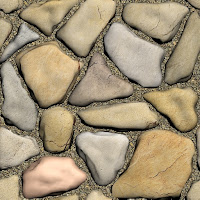Been busy busy like a bee today with studying, completed a study in Normal Bump Mapping.
Apparently what I did yesterday was known as Regular Bump Mapping. After some digging about I managed to find the explanation of why the two are difference in a bit of text I skipped over in my morning haze. (Too much work and not nearly enough caffeine) They explain it as follows:
"Normal bump mapping is a technique that lets you simulate high resolution surface detail on low resolution polygonal models.
Normal bump mapping is similar in some respects to regular bump mapping, but it conveys more complex surface detail. Normal bump maps store not only the depth information used in regular bump mapping, but also information on the direction normal of the surface, to produce more life-like results. "
So in general this task was to do the following:
Normal bump mapping involves two objects: a high resolution, polygonally detailed object as the source for the normal bump map information, and a low resolution target to receive the map and use it to appear more finely detailed than it really is.
And what I learnt in this task was the following:
•How to set up the map projection using the render to texture controls.
•Define diffuse, normal bump, and height maps, and bake the resulting texture onto a destination object.
•Preview the baked result in a viewport.
The first image is the information from the diffuse map only. The height and bump maps have been put in to the texture (They call it baked) of the plane but are not visible at this time.
The second image is the completed render, simple yet convincing.
And the final image is just a render of what they gave me to work with and as you can see how mapping works, taking something huge and in depth and simplifying it down and tricking the eye.
In other news, working on some sketches that i'll post soon enough
-Francis
_________________________________________________
Music: Apocalyptica - Path



No comments:
Post a Comment